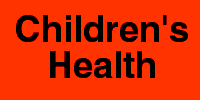German measles virus or bacteria
 There are two "forms" of measles: rubeola (the "ordinary" kind), which
causes more serious symptoms and can do permanent damage, and rubella
("German" measles), which is very benign if you have it as a child or an
adult but can induce severe birth defects in womem infected early in
pregnancy. Aside from some similarity in symptoms, there
isn't much in common betwen the two viruses.
There are two "forms" of measles: rubeola (the "ordinary" kind), which
causes more serious symptoms and can do permanent damage, and rubella
("German" measles), which is very benign if you have it as a child or an
adult but can induce severe birth defects in womem infected early in
pregnancy. Aside from some similarity in symptoms, there
isn't much in common betwen the two viruses.
Measles is a disease which usually produces fever, cough , conjunctivitis ("pink eye", but not quite the same as the "pink eye" seen with colds and earaches), a red, bumpy rash, and a rash ("Koplik spots") inside the cheeks. The measles virus affects only primates (humans, as well as monkeys and similar species); it does not affect animals.
It takes 1-1/2 to 2 weeks after exposure before someone develops
the initial signs of infection, which include fever (which starts low but
increases, sometimes to as high as 105 F) followed by cough, runny nose,
and conjunctivitis (pink
eye). The rash can appear anywhere from 1 to 7 days (but usually 2-4
days) after the "prodrome" (the fever and other initial signs of infection);
it usually starts at the patient's hairline, then spreads to the face and
neck and from there to the rest of the body, finally reaching the hands and
feet, and then fades with the oldest rash lesions disappearing first.
Koplik spots are tiny blue-white spots which appear up to 2 days before or
after the rash shows up. Measles infection can also cause loss of appetite,
swelling of lymph nodes, and diarrhea (which is more common in babies with
measles). It can be complicated by secondary
ear infections,
croup, and pneumonia.
Measles infection can also cause loss of appetite,
swelling of lymph nodes, and diarrhea (which is more common in babies with
measles). It can be complicated by secondary
ear infections,
croup, and pneumonia.
In some cases (about 1 out of 1, 000) patients with measles develop inflammation of the brain tissue, or "encephalitis". Very rarely, a persistent rubeola infection can produce SSPE, a disease in which nerves and brain tissue degenerate (sometimes many years after the original case of measles); now that we vaccinate most children against measles, SSPE is almost never seen. Up to 6% of patients with measles develop pneumonia, which can be either viral (from the measles virus) or bacterial, and this is the most common cause of death from measles (60% of deaths; acute encephalitis causes another 15% of measles-related deaths, while SSPE is responsible for death in only 5 to 10 of every 1 million cases of measles).










